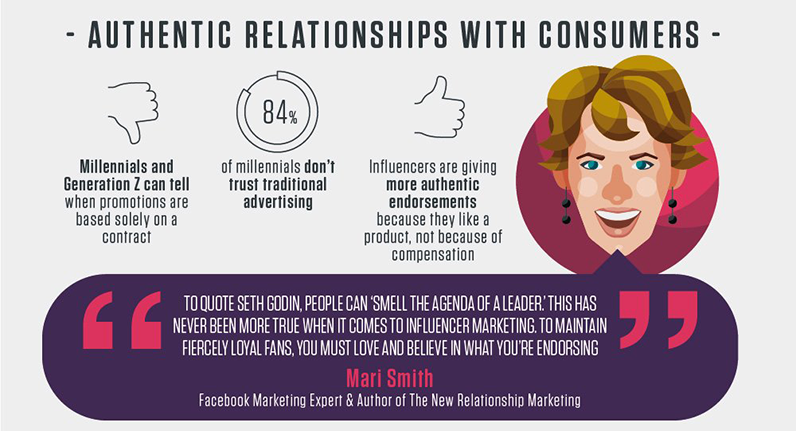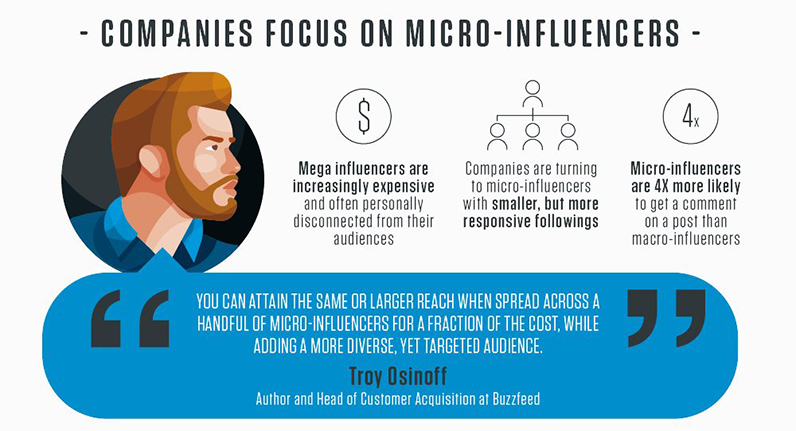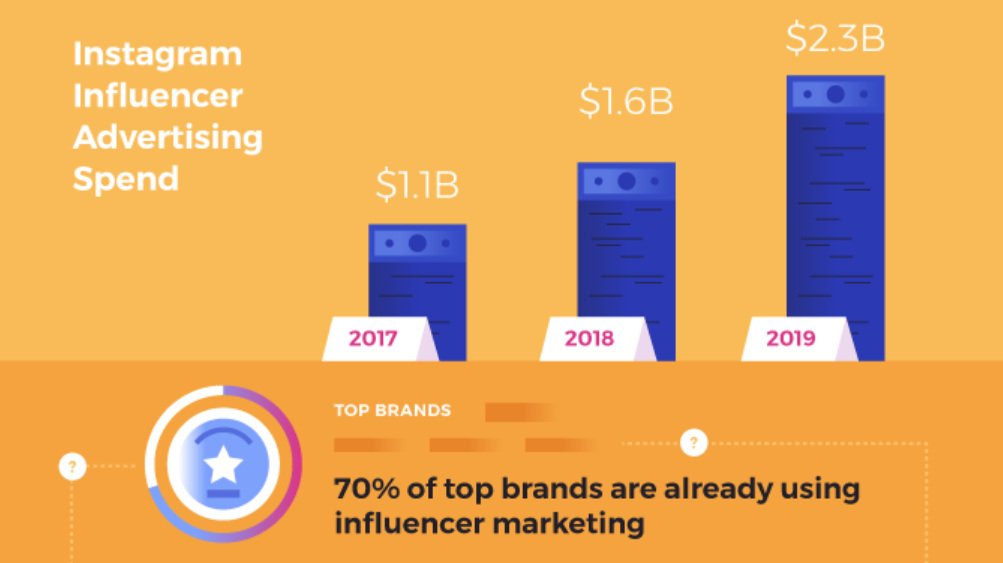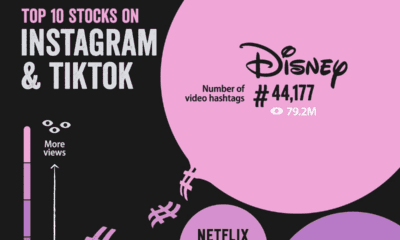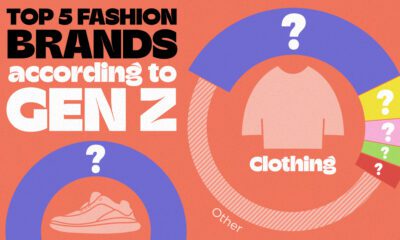Technology
The Influence of Instagram
The digital advertising landscape has changed dramatically over the past decade.
Social media platforms are now some of the most heavily trafficked places on the internet, and sharing hubs such as Instagram are increasingly becoming a cultural touchpoint for millions of people around the world.
Tapping into Instagram Influence
Instagram is closing in on a billion monthly active users, and with such a massive audience, social influencers (i.e. people with large, engaged audiences) are raking in the dough from paid brand endorsements.
Today’s infographic, from XCart, walks us through the multi-billion dollar phenomenon known as influencer marketing.

Chasing Attention Spans
It’s estimated that 65% of adults in the U.S. use social networks – a figure that spikes to an astonishing 90% for young adults.
Social media has become a fixture in our everyday lives and where attention spans wander, advertising is sure to follow. And follow it has. Marketers dumped over $23.68 billion into ads on social platforms in 2016, and that momentum shows no sign of slowing down.
However, one growing and increasingly potent form of marketing that isn’t entirely tracked in that total stems from influencers.
The Kings and Queens of Instagram
Instagram (acquired by Facebook in 2012) has seen impressive growth in recent years coinciding with a shift towards more visual content sharing. A combination of good timing and plagiarism has helped the photo sharing network grow by over 350% since 2014.
Instagram has also become a major platform for influencers.
While endorsements have traditionally come from celebrities such as actors or athletes, today’s influencers have built their audiences though sharing compelling content via social media channels. This is a huge shift as influencers come with all kinds of quantifiable audience sizes and demographic make-ups. It makes for targeting and relatability rolled into one package – particularly in the case of microinfluencers.
The Value of Influence
Power users who create a lot of content and amass thousands – even millions – of fans on a platform find themselves in a unique position. Their influence is worth something more tangible than likes; it’s worth some serious coin.
On the flip side of the equation, fans generally understand that influencers use sponsored posts as their compensation for creating content. A contemporary analogy would be occasional commercial breaks in exchange for a “free” TV program. The audience knows there’s no free ride, but if the network goes overboard, or the advertisers don’t align with the show properly, the reciprocity breaks down.
Similarly, influencers know that endorsements use up “credit” they’ve built up with their audience, so the successful ones choose their brand relationships wisely and don’t go overboard on sponsored posts.
Brands are Betting on Microinfluence
Over 70% of brands indicate they’re using influencer marketing, and brands will be spending an estimated $2.3 billion on it by 2019. While celebrities like Selena Gomez will earn a sizable chunk of that, people with much smaller audiences are each getting their slice of the pie too.
Not only is it easier to target local or niche audiences by working with microinfluencers, but these audiences also have much higher levels of engagement in the form of comments and likes on posts.
According to XCart, influencers with under 25,000 followers are a very affordable investment at ~$130 per post. This means that advertisers can collaborate with hundreds of influencers around the country for the same price as working with a celebrity.
Of course, there’s more vetting and logistics required in working with a larger group of influencers, but the payoff could be enormous for the right type of campaign.
—
Speaking of social media: Follow us on Facebook, Twitter, and LinkedIn to ensure you don’t miss your daily dose of data-driven visual content.
Technology
All of the Grants Given by the U.S. CHIPS Act
Intel, TSMC, and more have received billions in subsidies from the U.S. CHIPS Act in 2024.

All of the Grants Given by the U.S. CHIPS Act
This was originally posted on our Voronoi app. Download the app for free on iOS or Android and discover incredible data-driven charts from a variety of trusted sources.
This visualization shows which companies are receiving grants from the U.S. CHIPS Act, as of April 25, 2024. The CHIPS Act is a federal statute signed into law by President Joe Biden that authorizes $280 billion in new funding to boost domestic research and manufacturing of semiconductors.
The grant amounts visualized in this graphic are intended to accelerate the production of semiconductor fabrication plants (fabs) across the United States.
Data and Company Highlights
The figures we used to create this graphic were collected from a variety of public news sources. The Semiconductor Industry Association (SIA) also maintains a tracker for CHIPS Act recipients, though at the time of writing it does not have the latest details for Micron.
| Company | Federal Grant Amount | Anticipated Investment From Company |
|---|---|---|
| 🇺🇸 Intel | $8,500,000,000 | $100,000,000,000 |
| 🇹🇼 TSMC | $6,600,000,000 | $65,000,000,000 |
| 🇰🇷 Samsung | $6,400,000,000 | $45,000,000,000 |
| 🇺🇸 Micron | $6,100,000,000 | $50,000,000,000 |
| 🇺🇸 GlobalFoundries | $1,500,000,000 | $12,000,000,000 |
| 🇺🇸 Microchip | $162,000,000 | N/A |
| 🇬🇧 BAE Systems | $35,000,000 | N/A |
BAE Systems was not included in the graphic due to size limitations
Intel’s Massive Plans
Intel is receiving the largest share of the pie, with $8.5 billion in grants (plus an additional $11 billion in government loans). This grant accounts for 22% of the CHIPS Act’s total subsidies for chip production.
From Intel’s side, the company is expected to invest $100 billion to construct new fabs in Arizona and Ohio, while modernizing and/or expanding existing fabs in Oregon and New Mexico. Intel could also claim another $25 billion in credits through the U.S. Treasury Department’s Investment Tax Credit.
TSMC Expands its U.S. Presence
TSMC, the world’s largest semiconductor foundry company, is receiving a hefty $6.6 billion to construct a new chip plant with three fabs in Arizona. The Taiwanese chipmaker is expected to invest $65 billion into the project.
The plant’s first fab will be up and running in the first half of 2025, leveraging 4 nm (nanometer) technology. According to TrendForce, the other fabs will produce chips on more advanced 3 nm and 2 nm processes.
The Latest Grant Goes to Micron
Micron, the only U.S.-based manufacturer of memory chips, is set to receive $6.1 billion in grants to support its plans of investing $50 billion through 2030. This investment will be used to construct new fabs in Idaho and New York.
-

 Lithium6 days ago
Lithium6 days agoRanked: The Top 10 EV Battery Manufacturers in 2023
-

 Green2 weeks ago
Green2 weeks agoTop Countries By Forest Growth Since 2001
-

 United States2 weeks ago
United States2 weeks agoRanked: The Largest U.S. Corporations by Number of Employees
-

 Maps2 weeks ago
Maps2 weeks agoThe Largest Earthquakes in the New York Area (1970-2024)
-

 Green2 weeks ago
Green2 weeks agoRanked: The Countries With the Most Air Pollution in 2023
-

 Green2 weeks ago
Green2 weeks agoRanking the Top 15 Countries by Carbon Tax Revenue
-

 Markets2 weeks ago
Markets2 weeks agoU.S. Debt Interest Payments Reach $1 Trillion
-

 Mining2 weeks ago
Mining2 weeks agoGold vs. S&P 500: Which Has Grown More Over Five Years?

